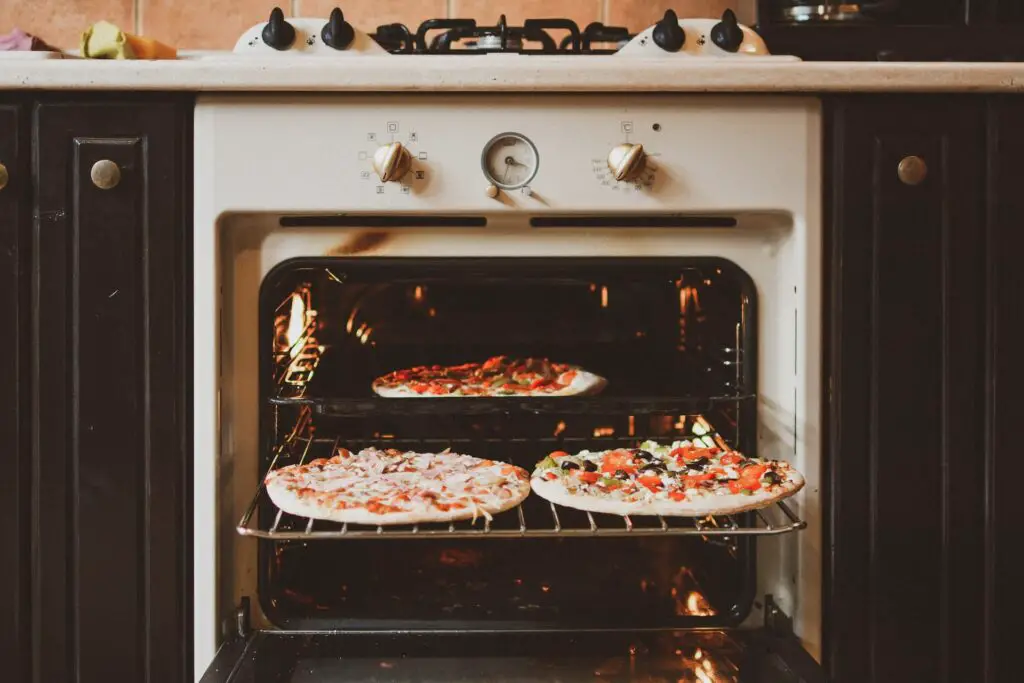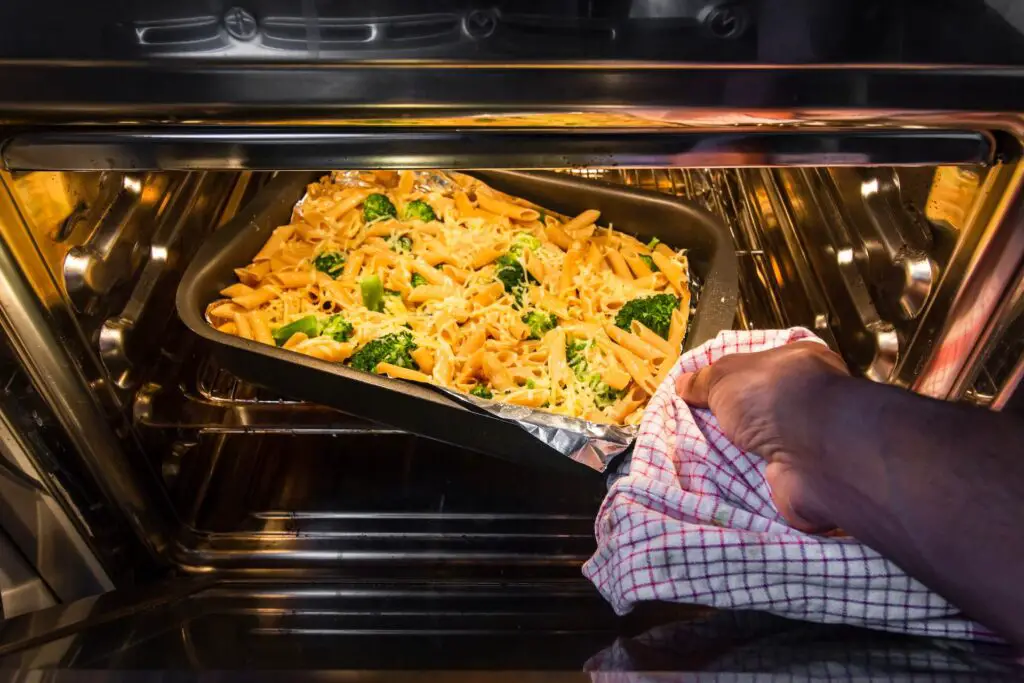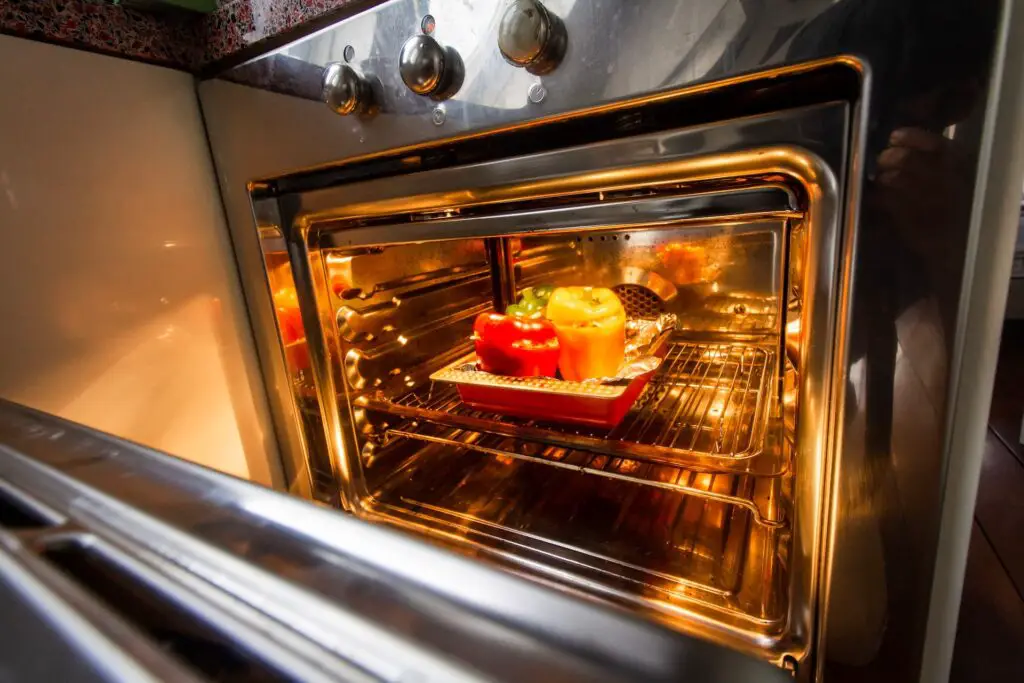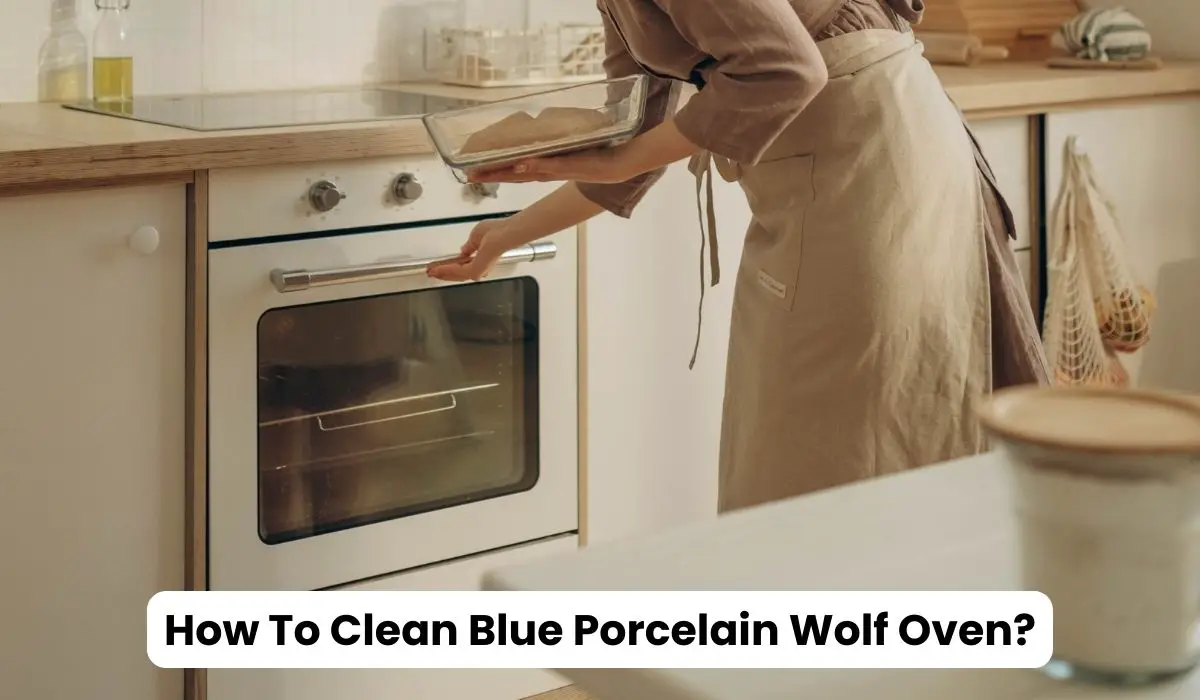Achieving a sparkling clean Blue Porcelain Wolf Oven is about maintaining a sleek kitchen aesthetic and elevating your culinary experience. Imagine effortlessly preparing meals in an oven that boasts a stunning blue porcelain finish and gleams with immaculate cleanliness.
Our comprehensive guide unravels the secrets to pristine perfection, offering you an easy-to-follow roadmap in this Ultimate Guide on How to Clean Your Blue Porcelain Wolf Oven. Say goodbye to persistent stains and hello to a kitchen centerpiece that looks exquisite and performs at its best.
Let’s dive into the art of oven maintenance, ensuring your culinary haven remains as impressive as the meals you create.
Table of Contents
What Is Blue Porcelain Wolf Oven?

If you’re venturing into the world of culinary excellence, you may have come across the term “Blue Porcelain Wolf Oven” and wondered what makes it stand out in kitchen appliances. This unique oven has gained popularity among cooking enthusiasts and professional chefs for its distinctive features and exceptional performance.
The defining characteristic of the Blue Porcelain Wolf Oven is its stunning blue porcelain exterior, which not only adds a touch of elegance to your kitchen but also reflects the brand’s commitment to aesthetics and functionality. The porcelain finish enhances the visual appeal and serves a practical purpose by making the oven resistant to stains and easy to clean.
Beyond its aesthetic charm, the Blue Porcelain Wolf Oven is celebrated for its advanced cooking technology. Equipped with state-of-the-art features, this oven ensures precise temperature control, allowing you to achieve culinary perfection with every dish. Whether baking delicate pastries or roasting a hearty Sunday dinner. The oven’s even heat distribution guarantees consistent results.
One standout feature of the Blue Porcelain Wolf Oven is its convection cooking capability. The convection fan ensures that hot air circulates evenly around the food, reducing cooking time and delivering deliciously crispy and evenly browned outcomes. This feature is particularly appreciated by those who value efficiency in the kitchen without compromising on taste.
In addition to its cooking prowess, the Blue Porcelain Wolf Oven is designed with user convenience in mind. The intuitive control panel and user-friendly interface make it easy for seasoned chefs and kitchen novices to navigate the oven’s settings effortlessly. The oven also comes with various cooking presets, taking the guesswork out of temperature and timing adjustments for specific dishes.
How To Clean Blue Porcelain Wolf Oven?

Maintaining the enduring splendor of your Blue Porcelain Wolf Oven is not just a routine chore; it’s a vital ritual to uphold its lasting charm and optimal state. Though visually striking, the mesmerizing blue porcelain exterior beckons for a delicate touch to safeguard its intrinsic beauty.
Embark on a journey of care with our exclusive step-by-step guide, curated to cleanse your Blue Porcelain Wolf Oven seamlessly. Let this be your secret recipe to preserving its allure, ensuring it stays as captivating as the day it first graced your kitchen.
Step 1: Gather Your Supplies
Before diving into the cleaning process, ensure you have all the necessary supplies. For cleaning your Blue Porcelain Wolf Oven, you’ll need:
- Dish soap or a mild detergent
- Baking soda
- White vinegar
- Soft microfiber cloths or sponges
- Warm water
- A plastic or silicone spatula
Step 2: Cool Down the Oven
Safety first! Ensure that your oven is completely cool before starting the cleaning process. You don’t want to risk burning yourself while attempting to make your oven sparkle.
Step 3: Remove Oven Racks and Trays
Take out the oven racks and trays. Cleaning them separately allows for a more thorough job and prevents any damage to the oven’s interior during the cleaning process.
Step 4: Create a Baking Soda Paste
Mix half a cup of baking soda with a few tablespoons of water to make a paste. Adjust the quantities until you achieve a spreadable consistency. This baking soda paste will be your secret weapon for tackling stubborn stains and grease.
Step 5: Apply the Baking Soda Paste
Apply the baking soda paste over the interior surfaces of your oven, avoiding the heating elements. Focus on areas with visible stains and grime. The baking soda will function its magic to break down harsh residues.
Step 6: Let It Sit Overnight
Patience is key. Leave the baking soda paste to sit overnight. This allows the mixture to penetrate and loosen the grime, making it easier to wipe away the next day.
Step 7: Wipe Away the Baking Soda
Wipe away the dried baking soda paste using a damp microfiber cloth or sponge. The softened grime should come off quickly, revealing a cleaner surface underneath.
Step 8: Tackle Stubborn Stains with Vinegar
Drop a fabric or sponge in white vinegar for persistent stains and scrub the affected areas. The acidic properties of vinegar will help dissolve harsh residues. Remember to rinse the oven thoroughly with warm water afterward.
Step 9: Clean Oven Racks Separately
Remember the oven racks! Scrub them with a mixture of warm water and dish soap. Use a plastic or silicone spatula for stubborn spots to scrape away residue gently.
Step 10: Final Rinse and Dry
Give your oven a final rinse with a clean, wet cloth to remove any remaining cleaning agents. Dry the interior thoroughly to prevent any water spots or streaks.
Your Blue Porcelain Wolf Oven should now be sparkling clean, ready to tackle your next culinary masterpiece. Regular cleaning will maintain the oven’s aesthetic appeal and enhance its longevity and performance.
How Do You Run A Clean Cycle On A Wolf Oven?

Maintaining the pristine condition of your Wolf oven is important for guaranteeing its longevity and optimal performance. One of the critical practices in achieving this is running a clean cycle on your oven. Follow these straightforward steps to execute a clean cycle effortlessly and keep your Wolf oven in top-notch shape.
1. Prepare the Oven
Before initiating the clean cycle, ensure your Wolf oven is empty. Remove any cooking utensils, racks, and accessories. This guarantees that the cleaning process is thorough and prevents any damage to your items.
2. Check for Residue
Inspect the oven interior for any visible food or grease residue. While the clean cycle is robust, removing large debris beforehand enhances its effectiveness. Wipe away any loose particles with a velvety cloth or sponge.
3. Set the Clean Cycle
On your Wolf oven control panel, locate the clean cycle function. Depending on your oven model, this may vary, but a clean icon commonly represents it. Once found, select the desired cleaning duration—typically, options range from two to four hours.
4. Initiate the Cleaning Process
Press the start button to commence the clean cycle. The oven will automatically lock its door for safety reasons during this process. The heat generated within the oven effectively burns away food residues, grease, and spills.
5. Ventilation
While the clean cycle is in progress, ensure proper ventilation in your kitchen. Open windows or switch on the exhaust fan to allow the release of any fumes produced during the cleaning process.
6. Wait Patiently
Allow the oven to complete the cleaning cycle without interruption. The high temperatures will turn residues into ash, making it easy to wipe away once the cycle concludes. Patience is vital for optimal results.
7. Cooling Period
After the clean cycle finishes, let the oven cool down. The door lock will disengage once the temperature is safe. This may take some time, so resist the urge to force the door open.
8. Wipe Away Ash
Once the oven has chilled, remove the ash remnants with a wet cloth or sponge. Ensure thorough cleaning, reaching all interior corners. Take care not to scratch the oven surfaces during this process.
9. Clean Oven Racks Separately
If your oven has removable racks, take them out and clean them separately. Wash them in warm, soapy water and clean away any remaining residue. Rinse thoroughly before placing them back in the oven.
10. Final Inspection
Before using the oven for cooking, perform a final inspection to ensure all ash and residues have been effectively removed. Your Wolf oven is now ready for your next culinary adventure.
Incorporating these simple steps into your oven maintenance routine will keep your Wolf appliance in impeccable condition and contribute to the quality and flavor of your culinary creations. Make clean cycles a regular practice to enjoy the full potential of your Wolf oven for years to come.
Also Read: Do Bakers Prefer Gas Or Electric Ovens?
Does Wolf Oven Have Self-Cleaning?

Yes, Wolf ovens typically come equipped with a self-cleaning feature. This functionality is designed to simplify the cleaning process for users, making maintenance more convenient.
The self-cleaning feature on Wolf ovens utilizes high temperatures to break down and incinerate food residue and grease. During the cleaning cycle, these substances are turned into ash, allowing for easy removal once the process is complete. It’s a time-saving and efficient to keep your oven interior in top-notch condition.
The procedure for using the self-cleaning feature is generally straightforward. Users must usually remove the oven racks before initiating the cleaning cycle, as the extreme temperatures involved can potentially damage them. Once the oven is set to self-clean mode, it undergoes a thorough cleaning process, eliminating the need for manual scrubbing or harsh chemical cleaners.
However, it’s essential to note that the availability of the self-cleaning feature may vary among different Wolf oven models and series. To ascertain whether your specific oven includes this functionality, it’s advisable to consult the product specifications or refer to the user manual.
Regular use of the self-cleaning feature in your Wolf oven contributes to maintaining a hygienic cooking environment. This feature ensures that your oven continues to function optimally by preventing the accumulation of stubborn grime and grease.
While the self-cleaning feature offers convenience, users should be aware of specific considerations. High temperatures during the cleaning cycle may pose a risk to some oven elements, and it’s important to adhere to the manufacturer’s guidelines for safe usage. Additionally, being mindful of the duration of the self-clean cycle, which can extend over several hours, is essential.
Conclusion:
At this article’s end, you’ve learned to transform your cooking haven with a sparkling blue porcelain wolf oven. Armed with simple yet effective cleaning tips, you can tackle stains and spills confidently, ensuring that your culinary masterpiece is backed by an oven that gleams as brilliantly as your culinary creations. No more fretting over stubborn residue or dull surfaces – just the joy of a pristine oven ready to bring your recipes to life.
So, go ahead, embark on this cleaning adventure, and let the radiance of your wolf oven match the brilliance of your culinary prowess.
FAQs
How Often Should I Clean My Oven?
Regular cleaning is key. Aim for a deep clean every three to six months, with spot cleaning as needed for spills and stains.
Can I Use Abrasive Cleaners on Blue Porcelain?
Using abrasive cleaners can damage the delicate surface of Blue Porcelain. Stick to gentle solutions to preserve the beauty of your Wolf Oven.
Is it Safe to Use Self-Cleaning Features on Blue Porcelain?
While many Wolf Ovens come with self-cleaning features, it’s advisable to avoid them for Blue Porcelain surfaces. Opt for manual cleaning to prevent potential damage.



